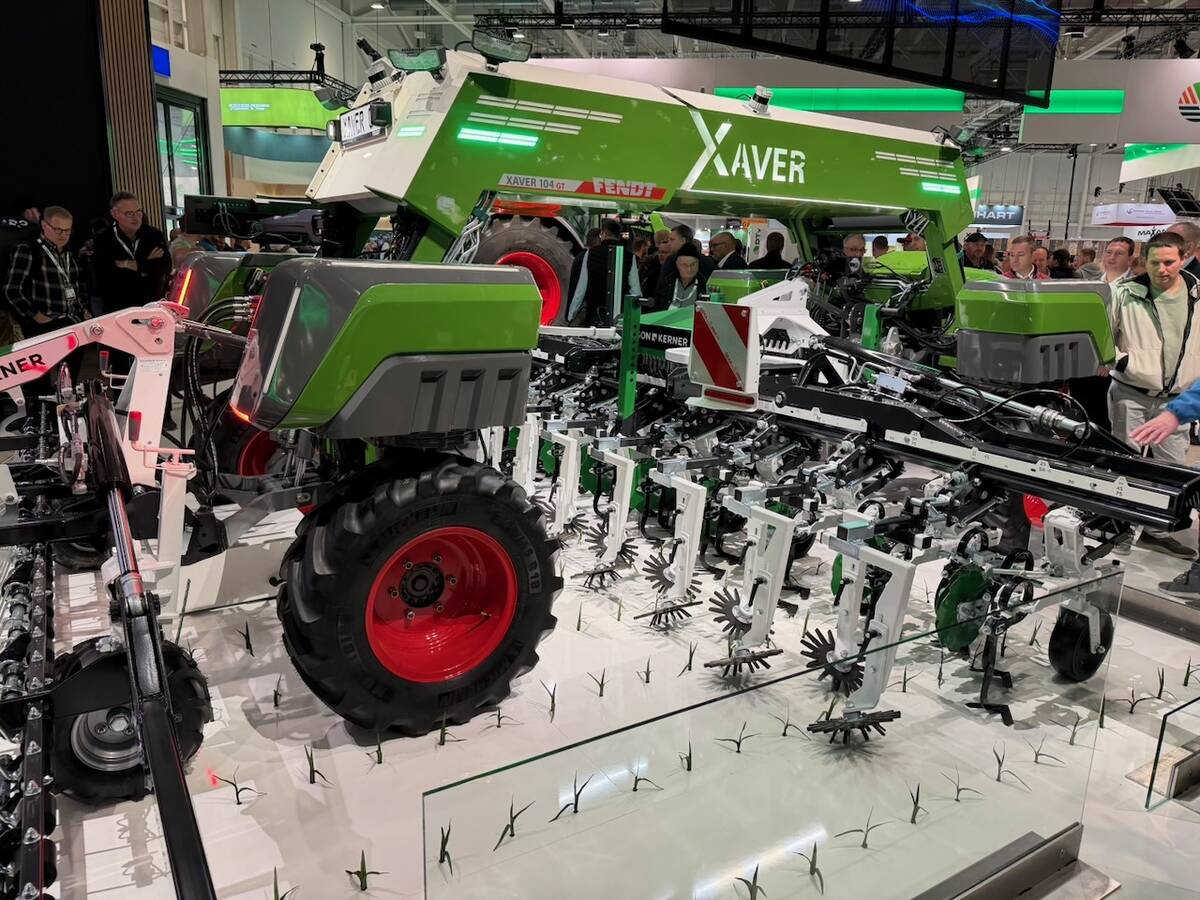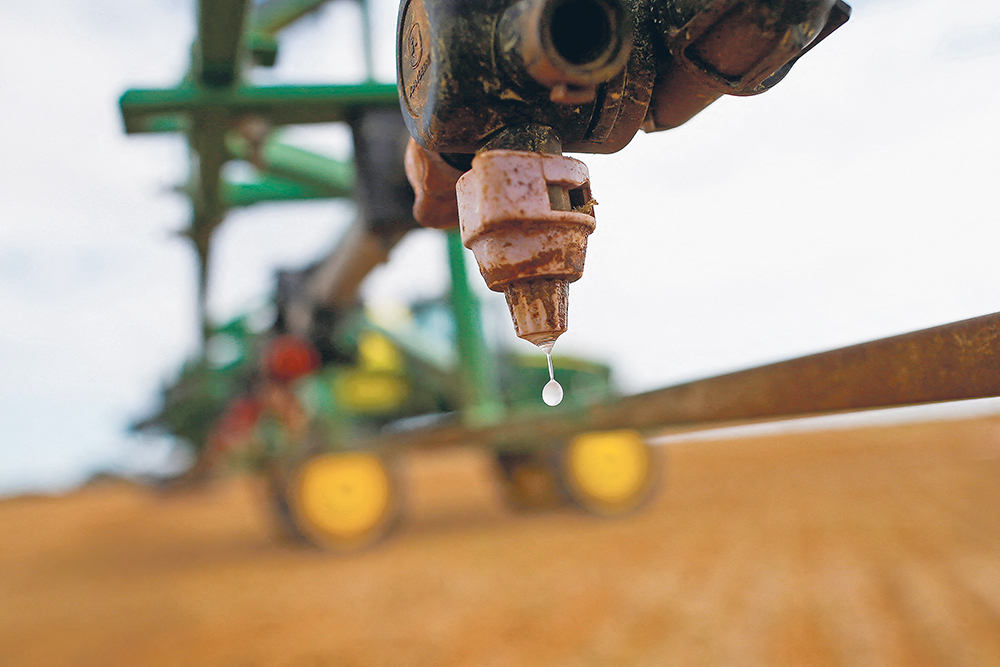‘Off-the-charts’ supply disruptions derail U.S. farmers’ production strategies and increase costs
CHICAGO, Ill. (Reuters) — American farmers have cut back on using common herbicides, hunted for substitutes to popular fungicides and changed planting plans over persistent shortages of agricultural chemicals that threaten to trim harvests.
Spraying smaller volumes of herbicides and turning to less-effective fungicides increase the risk for weeds and diseases at a time when global grain supplies are already tight because the Ukraine war is reducing that country’s exports.
Interviews with more than a dozen chemical dealers, manufacturers, farmers and weed specialists in the United States showed shortages disrupted growers’ production strategies and raised their costs.
Read Also

VIDEO: Agritechnica Day 4: Robots and more robots, Nexat loves Canada and the trouble with tariffs
Agritechnica Day 4: Robots and more robots, Nexat loves Canada and the trouble with tariffs.
Shawn Inman, owner of distributor Spinner Ag Incorporated in Zionsville, Indiana, said supplies are the tightest in his 24-year career.
“This is off the charts,” Inman said. “Everything was delayed, delayed, delayed.”
Shortages further reduce options for farmers battling weeds that developed resistance to glyphosate, the key ingredient in the commonly used Roundup herbicide.
Prices for glyphosate and glufosinate, another widely used herbicide sold under the brand Liberty, jumped more than 50 percent from last year, dealers said, padding profit at companies like Bayer AG and Corteva Inc.
The U.S. Agriculture Department said it heard from farmers and food companies concerned about whether agribusinesses are hiking prices for goods like chemicals, seeds and fertilizer to boost profit, not simply because of supply and demand factors. The agency has launched an inquiry into competition in the sector, and some watchdog groups said it is moving too slowly.
Agrichemical companies blame the COVID-19 pandemic, transportation delays, a lack of workers and extreme weather for shortages. Fertilizer and some seeds are also in short supply globally.
More difficulties are on the horizon, as BASF, which formulates glufosinate, said the supply situation will not improve significantly next year.
“It’s going to take more time than what our customers, farmers and retailers would have thought,” said Scott Kay, vice-president of U.S. crops for BASF.
Tennessee farmer Jason Birdsong said he abandoned plans to plant soybeans on 100 acres after waiting months to receive Liberty he ordered from Nutrien Ag Solutions. He ultimately received less than half his order for 125 gallons and planted corn on the land instead. Birdsong said he is better able to control weeds in corn than soybeans.
Nutrien said numerous events stalled the supply chain during the pandemic and the company provided alternative solutions to customers.
Birdsong said he needed Liberty to fight weeds that are resistant to glyphosate in soybean fields. He said he ruled out a third option, a dicamba-based herbicide from Bayer, because of extensive federal restrictions on when and where dicamba can be sprayed.
“With the dicamba technology being so strict, Liberty is the go-to,” Birdsong said.
The Environmental Protection Agency approved new restrictions on dicamba use this year in Iowa and Minnesota, two major farm states. The herbicide, approved in 2016, faces stricter regulations because it can drift onto neighbouring farms and damage crops not modified to resist dicamba.
The rise of a rival Corteva soybean variety, Enlist, is further adding to glufosinate demand because the crop can be sprayed with glufosinate, among other chemicals, dealers said.
Generic versions of glufosinate-based Liberty sold for about US$100 a gallon, up from $32 a gallon last year, said Dion Letcher, owner of Letcher Farm Supply in Garden City, Minnesota. The increase reduces farmers’ profits from lofty crop prices.
Shortages of Liberty and other products began last year as distributors used back-up supplies to offset supply disruptions in 2021, Letcher said. Now, there are no reserves, he said.
“Anything from BASF is short this year,” Letcher said. “I’m worried about next year.”
For glyphosate, prices reached $50 to $60 a gallon, up from less than $20 a gallon in mid-2021, said Inman, the owner of Spinner Ag Incorporated.
Bayer reported sales of glyphosate-based products were “particularly strong” in the first quarter as prices increased and volumes declined. Overall, its herbicide sales soared 67 percent from a year earlier to US$2.64 billion.
BASF’s agricultural solutions unit posted quarterly sales of $3.6 billion, up 21 percent from a year earlier. Corteva also sold more than $2 billion worth of crop-protection products, up 23 percent from a year earlier, as prices rose 11 percent.
BASF is seeking to acquire raw materials earlier to avoid future shortages, Kay said. Bayer said it broadened its supplier base for raw ingredients and added bulk trucks to deliver products more efficiently. Farmers who cannot find glyphosate and glufosinate are switching to alternatives, Corteva said.
The supply limitations have caused practical headaches for growers.
Indiana farmer Denny Bell said he did not receive Liberty in his usual 250-gallon containers. Instead, he spent seven hours emptying 2.5-gallon jugs into a larger vat before spraying. Bell said he also waited six months for a popular BASF fungicide, Veltyma.
Reduced use of herbicides this summer could also leave farmers with more weeds to fight for the next two years as seeds sprout.















